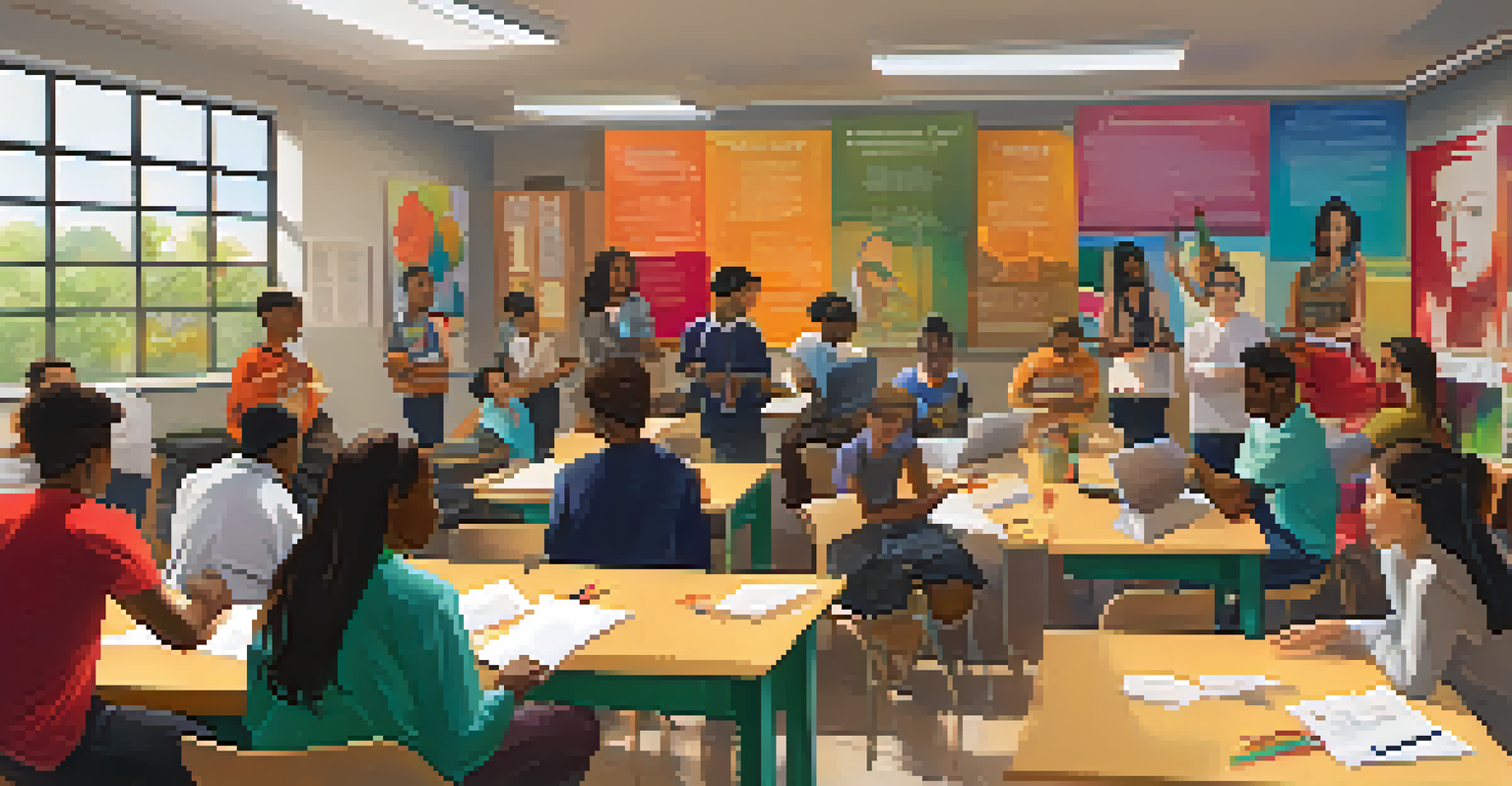The Role of Feedback in Intercultural Learning Experiences

What is Intercultural Learning and Why It Matters
Intercultural learning is the process of understanding and appreciating cultural differences. It helps individuals navigate diverse environments, fostering mutual respect and collaboration. This kind of learning is crucial in our globalized world, where interacting with people from various backgrounds is commonplace.
The single biggest problem in communication is the illusion that it has taken place.
By engaging with different cultures, individuals can gain insights into varying perspectives and practices. This not only enriches their personal experiences but also enhances their professional competencies. For instance, an employee working in a multinational company benefits significantly from understanding colleagues' cultural backgrounds.
Ultimately, intercultural learning encourages open-mindedness and adaptability, traits that are increasingly valuable in today’s interconnected society. Through this learning journey, individuals can cultivate empathy, essential for meaningful interactions across cultures.
The Importance of Feedback in Learning
Feedback is a vital component of any learning experience, providing guidance and insights to help individuals progress. It acts as a mirror, reflecting one’s strengths and areas for improvement. In an intercultural context, feedback can reveal how well one is adapting to and understanding different cultural norms.

Consider a student studying abroad who receives feedback from local peers about their communication style. This feedback can help them adjust their approach, ensuring they connect more effectively with others. It emphasizes the role of constructive criticism in fostering growth and understanding.
Intercultural Learning Enhances Growth
Understanding cultural differences fosters mutual respect and enriches personal and professional experiences.
Moreover, feedback can validate efforts and encourage learners to embrace their journey. When individuals receive positive reinforcement, it boosts their confidence, motivating them to explore further and engage more deeply with diverse cultures.
Types of Feedback in Intercultural Settings
Feedback can come in various forms, including verbal, written, and non-verbal cues. Each type plays a unique role in enhancing intercultural understanding. For example, non-verbal feedback, such as body language and facial expressions, can convey much about cultural reactions and acceptance.
Cultural differences create communication barriers, but understanding and feedback can help bridge those gaps.
Verbal feedback, on the other hand, allows for in-depth discussions and clarifications. This dialogue is essential for individuals to understand cultural nuances and avoid misunderstandings. For instance, a simple phrase might have different connotations in different cultures, and discussing these can illuminate potential pitfalls.
Written feedback, often found in academic or professional settings, provides a permanent record that learners can refer back to. This form of feedback allows individuals to reflect on their growth over time, helping them track their intercultural competence development.
Creating a Feedback-Rich Environment
To maximize intercultural learning, creating a feedback-rich environment is essential. This can be achieved by fostering open communication, where individuals feel comfortable sharing their thoughts and experiences. A supportive atmosphere encourages learners to seek and offer feedback freely.
For instance, group activities that promote peer feedback can enhance understanding and collaboration. When learners provide insights to one another, they not only help each other grow but also gain new perspectives themselves. This reciprocal learning process is invaluable in intercultural contexts.
Feedback Drives Intercultural Understanding
Constructive feedback is essential for adapting communication styles and enhancing relationships in diverse cultural settings.
Additionally, utilizing technology can facilitate feedback exchange. Online platforms and apps designed for collaborative learning can bridge gaps, allowing individuals from different cultures to share their experiences and insights seamlessly.
Challenges of Giving and Receiving Feedback
While feedback is crucial, it can also pose challenges, especially in intercultural contexts. Different cultures have varying approaches to giving and receiving feedback, which can lead to misunderstandings. For example, some cultures prioritize direct feedback, while others may favor a more indirect approach, valuing harmony over confrontation.
Navigating these differences requires sensitivity and awareness. Learners must be willing to adjust their feedback styles to accommodate cultural preferences. This might mean softening critiques or being more explicit in praise, depending on the audience.
Moreover, individuals may feel vulnerable when receiving feedback, particularly if it highlights their shortcomings. Encouraging a culture of growth and resilience can help learners view feedback as a tool for improvement rather than criticism.
The Role of Cultural Sensitivity in Feedback
Cultural sensitivity is paramount when providing feedback in intercultural settings. Understanding cultural norms and values can significantly influence how feedback is perceived and received. For instance, in some cultures, direct criticism may be seen as disrespectful, while in others, it is viewed as a necessary part of growth.
Being culturally sensitive allows individuals to tailor their feedback approach, ensuring it aligns with the recipient's expectations. It also fosters trust and respect, making it easier for learners to accept and act on the feedback they receive.
Cultural Sensitivity is Key to Feedback
Being aware of cultural norms helps tailor feedback, fostering trust and promoting a positive learning environment.
Ultimately, incorporating cultural sensitivity into feedback practices enhances the learning experience. It encourages deeper connections and understanding, creating a more enriching intercultural exchange.
Conclusion: Embracing Feedback for Growth
In conclusion, feedback plays a pivotal role in intercultural learning experiences. It helps individuals navigate the complexities of diverse cultures, providing them with the insights needed for personal and professional growth. By embracing feedback, learners can foster greater understanding and adaptability.
As we interact with different cultures, let’s remember the importance of creating environments where feedback is encouraged and valued. This not only enhances our learning journey but also enriches our relationships across cultural boundaries.

Ultimately, by prioritizing feedback in intercultural settings, we can contribute to a more interconnected and empathetic world, where everyone has the opportunity to learn, grow, and thrive together.